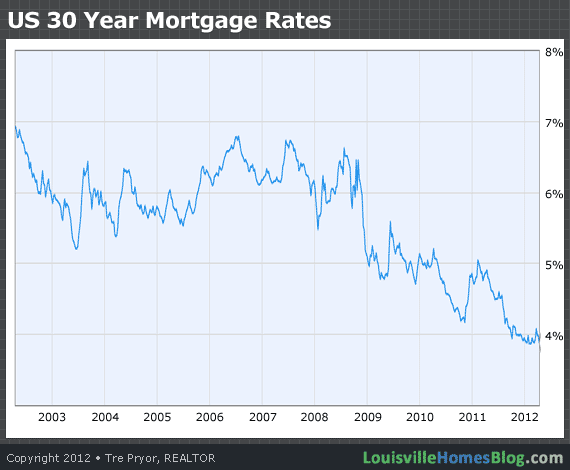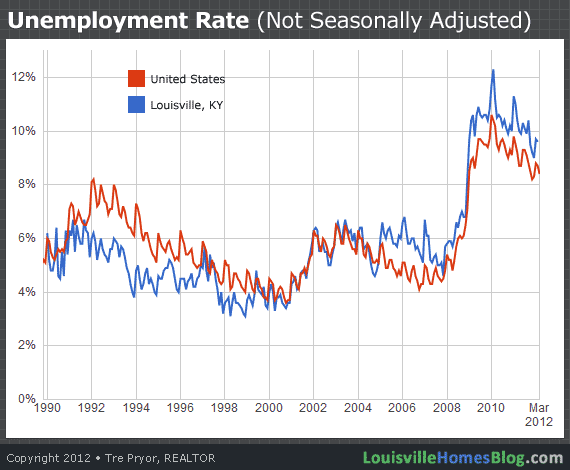In one of my light-bulb moments, I discovered that (at least here in Louisville) unemployment has proven to be a bigger factor in determining home sales activity than traditional real estate metrics.

Now that unemployment has started trending lower it will be interesting just how much sales will be affected, especially considering that interest rates continue to reside at historical lows.
Let’s take a look at what rates have done over the past decade.
A hot topic in real estate circles is, “How long can mortgage rates stay this low?” Experts fall into one of two camps.
Camp One feels that with the economy improving, albeit slowly, the Fed will be forced to increase the prime rate, which in turn will affect all tied rates. Once that happens, mortgage rates will rise above 4 percent and move towards 5 percent over the course of 2012.
This is a realistic approach, to understanding what we know about how this country’s financial institutions work, but is not the most popular view among experts.
The second camp takes a more political approach. With an election around the corner, it’s highly unlikely that the Obama Administration allows rates to be raised when the overall economy is still far from healthy.
This view appears to be supported by an unprecedented announcement.
In January the Fed went on record saying it wouldn’t raise interest rates until the end of 2014.

It’s unlikely the institution is obligated to adhere to this proclamation.
Moving back to the unemployment metric, we see a couple of things stand out.
First, understand how dramatically unemployment rose from 2008 to 2009. Consumer confidence was severely shaken, and even with more recent declines, unemployment is still 4 percent above what brilliant minds like Beveridge, Fridman, and others deem “ideal.”
Secondly, it’s interesting to see how Louisville somewhat mimics the National trend but in a partially delayed state. During almost all of the 1990’s Louisville bested the National rate. Since then, we have been living a half point or more above it.
So with unemployment improving and mortgage rates likely to remain low throughout 2012, the Louisville real estate market should gain momentum. While other parts of the country are seeing more dramatic improvements in their real estate markets, ours will be a more modest gain.



